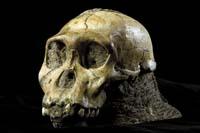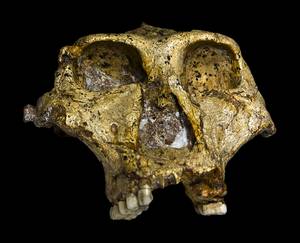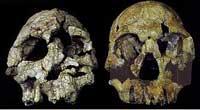Australopithecus sediba, a mosaic of evolution
2013/04/12 Roa Zubia, Guillermo - Elhuyar Zientzia Iturria: Elhuyar aldizkaria

After the publication of the results of six bone studies of the australopithecus sediba, the complexity of the evolution of hominids has been revealed. According to experts, the research has developed an anatomical mosaic from very well preserved remains. In view of the mosaic, anthropologist Lee Berger, who described the species, has written that the interpretation of cases of less conserved fossils should be reviewed. The bones of 2 million years ago were discovered in 2008 in the cave of Malapa, near Johannesburg. Two years later, Berger declared a new species from these tracks: Australopithecus sediba. According to experts, these are bones of three specimens, of which a single specimen was used to describe the species itself, but the study was done with remains of three. In total, researchers have studied teeth, jaws, many chest bones and arms, warm, and many parts of the spine. It is a very complete study, as it shows how the Australopithecus sediba walked, how it moved and how it died. The work has been done by six research groups and now the results have been published simultaneously in the journal Science, with an introduction by Berger himself. The result, “anatomical mosaic”, is a kind of puzzle, but it has a particularity: the story that tells each piece of the puzzle is different. In fact, in some cases, studies of two bone groups lead to opposite effects. According to the phylogenetic study of teeth, the sedition of Australopithecus is similar to that of the Australopithecus africanus found in South Africa, but different from that of those that have appeared in East Africa (such as the famous Lucy). According to the study of the jaws, instead, they are different in the Australopithecus africanus. The arm, shoulder, shoulder and, in general, chest bones are primitive. They are ideal for the enjoyment of trees, according to experts. They look more like monkey than hominid. The number of vertebrates and curvatures of the spine, however, despite the descendants of the Australopithecus africanus, are more similar to those of the spine of a certain Homo erectus. And the bones of the legs of the sediba Australopithecus have the characteristics of the feet. Finally, the study has shown that evolution is not a linear process. Australopithecus sediba is not a step from the path of monkeys to hominids. Some of its characteristics are those of monkeys and others of hominids, but, as Berger points out, the evolution shown by this combination is very different from that shown by other australopitheces and the first hominids. It is a mosaic of evolution.

Gai honi buruzko eduki gehiago
Elhuyarrek garatutako teknologia





